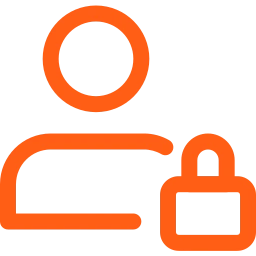Introduction
Traceability is a fundamental requirement in ISO 26262 to ensure that safety-related elements are systematically developed and verified. However, achieving effective traceability for a Safety Element Out of Context (SEooC) presents unique challenges. Unlike conventional automotive development, where the Item Definition and Hazard Analysis and Risk Assessment (HARA) guide traceability, SEooC development starts with assumed safety goals and lacks predefined vehicle integration details. This often results in unclear upward traceability from Functional Safety Requirements (FSRs) to Technical Safety Requirements (TSRs). This blog provides best practices to establish robust traceability for SEooC in compliance with ISO 26262.
Challenges in SEooC Traceability
1. Safety Goal to FSRs to TSRs
- Absence of Item Definition and HARA
- SEooC developers do not have direct access to vehicle-specific hazard analysis.
- Safety goals must be assumed based on the intended application.
- FSRs Development from SEooC Specification
- Functional Safety Requirements (FSRs) are derived based on the SEooC specification document.
- These FSRs serve as the foundation for deriving Technical Safety Requirements (TSRs).
- Ensuring correctness and completeness of FSRs is crucial for achieving accurate TSRs.
- Unclear Upward Traceability from TSRs
- In standard development, TSRs trace back to safety goals through the system architecture.
- SEooC lacks a predefined system context, making this linkage ambiguous.
2. Integration Complexity
- SEooC is designed for multiple vehicle architectures, making a single traceability model challenging.
- Original assumptions might not fully align with the final implementation.
Best Practices for Traceability in SEooC
1. Establish Assumptions of Use (AoUs) Clearly
- Define and document all assumptions regarding:
- Operating conditions
- Functional expectations
- Safety goals and ASIL decomposition
- Ensure AoUs are validated with integrators to avoid mismatches.
2. Create a Mapping from Assumed Safety Goals to FSRs to TSRs Based on SEooC Specification
- Extract assumed safety goals from the SEooC specification document.
- Develop a structured traceability matrix linking the SEooC specification to:
- Functional Safety Concept (if available)
- Derived Functional Safety Requirements (FSRs)
- Corresponding Technical Safety Requirements (TSRs)
- Supporting safety mechanisms
- Use justification documents to explain the rationale for each mapping, ensuring that traceability is based on documented design assumptions.
3. Ensure Modular Traceability for Flexible Integration
- Develop independent traceability models that allow integration with different architectures.
- Use hierarchical traceability tools to maintain structured linking between work products.
4. Use a Traceability Management Tool
- Leverage tools such as IBM DOORS, JAMA, or Polarion for:
- Bi-directional traceability between work products
- Change impact analysis
- Automated verification of requirement coverage
5. Align with Integrators for Upward Traceability Closure
- Collaborate with OEMs and Tier 1 suppliers to:
- Validate that TSRs fulfill actual vehicle safety goals
- Refine traceability models based on real-world integration feedback
- Ensure traceability reports remain adaptable for different vehicle applications.
6. Perform Gap Analysis and Justification for Missing Links
- Identify gaps where direct traceability is missing.
- Provide safety justifications, such as:
- Functional equivalence of requirements
- Additional safety mechanisms covering traceability gaps
- References to applicable industry best practices
Conclusion
Ensuring effective traceability for SEooC requires a structured approach that compensates for the lack of direct item-level context. By clearly defining assumptions, establishing modular traceability, leveraging traceability tools, and collaborating with integrators, SEooC developers can create a robust linkage from the SEooC specification document to Functional Safety Requirements (FSRs) to Technical Safety Requirements (TSRs).
Additionally, the integration challenge should be treated as a separate problem, requiring independent validation of assumptions and iterative refinements with vehicle manufacturers. Adopting these best practices ensures compliance with ISO 26262 while facilitating seamless integration into diverse automotive architectures.


